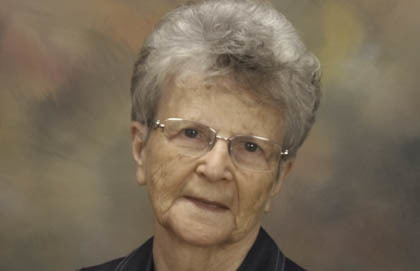In his essay on theories of "presence," Cormac Power makes the following argument: "In the contemporary Western world, our knowledge of the environment is increasingly shaped, not by personal experience or interaction, but by media images and representations."
Power is speaking about how that which surrounds us in reality, the environment in which we physically live, is made "present" in live theatre productions. However, his comment highlights the way the institutions and the people that surround us are presented in all forms of media. So, much of what we know about our society has, indeed, been filtered or even presented by stylized representations.
What does this mean in concrete terms? How does knowledge shaped by media images and representations differ from that gained by personal experience and interaction? Though a wide-angle perspective on this question might be helpful, it is also beneficial to consider a specific instance of the power of media to shape knowledge.
In an age of blogs, Facebook "friending," and tweets, how is religious life, particularly, understood? Examples from popular culture, especially the recently released novel The Beautiful Mystery by best-selling Canadian author Louise Penny, reveal the different ways understandings of monasticism are conveyed in popular culture. Though these popular understandings are caricatures, they do provide increasingly fertile ground for discussions of real religious life.
Though popular art is often a poor conversational partner for sustained discussion of real life, there are a number of reasons why Penny's book rises to the occasion. Penny, a longtime host on CBC Radio, had already distinguished herself before writing The Beautiful Mystery by producing seven volumes featuring her lead character, Chief Inspector Armand Gamache of the Sûreté du Québec. Critics have found Penny's work interesting largely because she is able to capture reality in a way that many other authors in her genre cannot: she captures light, sound, texture, taste, posture, good, evil and complex emotions in ways that make them seem real. Her most recent novel has made it near the top of many domestic and foreign bestseller lists and secured a nomination as one of the top five books by Quebec authors in the "Canada Reads" program on CBC Radio.
While the main characters have the depth and edginess of P.D. James' Inspector Adam Dalgliesh, Henning Mankell's Kurt Wallander or even Ian Rankin's Inspector Rebus, Penny's book also features the chief inspector's assistant, Jean-Guy Beauvoir. Much of the emotional pull in the story happens between these two protagonists. Writing in a vein much like the British whodunit writers with large casts of characters, attention to detail and closed settings, Penny's book creates a literary world that is entirely fictional but that has a ring of truth. That world, not unlike the one in Umberto Eco's The Name of the Rose, centres on a monastery caught between the past and the future.
As in her other books, Penny's characters are not cardboard cutouts of "good" guys and "bad" guys. Rather, evil and good run throughout the various characters in complex and often contradictory ways. A thread from previous works that continues in this book, is the moral corruption of the Quebec police force and the moral dilemmas that face the chief inspector and his assistant throughout. In this book, they are haunted by the ongoing presence of decisions past, especially those that can be interpreted indivergent ways,from different perspectives. Beauvoir, especially, has to wrestle with the implications of the evil that has long influenced his life.
An apparent homicide in the community of an order of Catholic monks presumed disbanded, the Gilbertines, draws Inspector Gamache and Beauvoir to the monastery of Saint-Gilbert-Entre-les-Loups in a remote corner of northern Quebec. The monastery had been in complete seclusion until the monks became famous after releasing a recording of their chants. The sale of the CD allows them to make some capital investments to improve their deteriorating monastery, but also attracts a great deal of attention from those seeking to know the source of this exceptional music. As they look for the killer, Gamache and Beauvoir discover that the power of the music is found in attention to a primitive form of musical notation: indeed, the dead monk was found holding a versified Latin fragment featuring these "neumes."
Penny writes a great whodunit. Though the story moves along slowly, the suspense holds you until the end when the crime is solved (and a subplot of the next book begins). It is not a run-of-the-mill airplane book, meant to be nothing more than entertainment. Rather, this book has enough meat to be chewed and discussed. In particular, it focuses our attention on issues that help us understand how religious life is presented in popular culture in Canada. Even though her book is well-written for its genre, it does rely on a series of stereotypes or caricatures of religious life to propel the story forward. Naming them does not detract from the quality of Penny's fiction, and it helps us understand how the consecrated life is being represented in the popular culture of our time.
History
Much like Dan Brown's "facts" at the beginning of his stories, Penny opens her novel with a prologue explaining the history of music in the Catholic Church. This is a wonderful way of increasing the "truthiness" of the novel and provides the seeming historical backdrop for the action. She explains that the "beautiful mystery" in the history of the Catholic Church was the profound effect that chants had on religious communities. "The monks believed they were singing the word of God, in the calm, reassuring, hypnotic voice of God." That history began with a monk who invented "neumes" to describe musical accompaniment. Yet his original work was lost. Modern monks could partly understand what he had written but did not have the starting note and tone to understand the rest. To understand the "mystery," one had to have the original manuscript created by this monk.
This musical mystery is woven through the whole of Penny's story. Yet, the book contains many more "facts" than this. She often provides historical tidbits or puts words in the mouths of her characters to help us understand Catholic history. Take, for example, the treatment of reform movements in the Church, the role of the Inquisition, or the sexual abuse of minors. This last is probably the best example: at one point the story suggests that the killer is trying to hide sexual abuse in the monastery. Beauvoir corners a monk with this suggestion:
"But still, the homicide inspector said nothing. He waited. And waited.
"Finally silence was his friend. And the monk's enemy. Because in that silence sat a specter. Fully grown. Fully fleshed. Of all the little boys. All the choirboys. The schoolboys. The altar boys. The trusting boys. And their parents. That lived forever, in the silence of the Church.
"When given a choice, given free will, the Church had chosen to protect the priests. And how better to protect those clerics than to send them into the wilderness. To an order all but extinct. And build a wall around them.
"Where they could sing, but not speak.
"Was Dom Philippe [the abbot] as much guard as abbot? A saint who kept watch over sinners?"
This little story is indicative of the supposed historical basis of the story. Indeed, there is no doubt that many might have this opinion about the Catholic Church, but it does not correspond to the reality of sexual abuse in the modern Catholic Church. The real stories are not happy ones, but they are much more complex than simply saying that the Church was "silent." However, throughout the book, Catholic history is presented in a caricatured manner, both by Gamache and Beauvoir, and interestingly, by the monks themselves. The monks, those who should probably have a deeper understanding of Catholicism, are almost comical in their basic ignorance of Catholic history and structures. Though the story pretends to be "historical" in tone, it is nothing more than a caricature of Catholic history with which the reader is already familiar.
Sexuality
Though it may seem unlikely in a book on monks, this moral imposition by the author and, in turn, the reader is seen throughout the book in questions of sexuality: Beauvoir's hidden relationship with Gamache's daughter; the seeming asexuality of the monks contrasted with the presumed homosexuality of one of the members; the pathologic, homophobic attitudes of the monks contrasted with the open attitudes of the investigators; and the above-mentioned issue of sexual abuse.
This treatment of juxtaposed sexuality helps highlight the tension in the story. As a point of comparison, consider the treatment of sexuality in the "Millennium" trilogy by the late Stieg Larsson. In those books the author does a masterful job of keeping the reader from judging the polyamorous liaisons of the main characters, while feeling an overwhelming moral disgust for the horrendous sexual abuse perpetrated on those same people. My point is not to lighten the disgust for the latter, but to consider how the former has been caricatured by the contrast so as to eliminate what in real life would undoubtedly cause great emotional distress and existential confusion.
Though The Beautiful Mystery is not sexually graphic like Larsson's best-selling series, it does use the juxtaposition of two sexual registers to its advantage. In making Quebecois society, in the character of Beauvoir, the backdrop for the sexuality of the monks and vice versa, both end up being unnuanced portraits, not necessarily what real monks in Quebec might experience in their understanding of sexuality and intimacy. That is, sexuality in The Beautiful Mystery is a mirror of societal experience, not necessarily what is lived in Catholic religious communities.
Further, as in the "Millennium" books, here is a world that is at the same time "amoral" and full of "sin." The author uses this to great effect when judging the prudishness of the Catholic Church and in condemning all attempts to judge others. The irony, intended or unwitting, of course, is that it takes a strong vision of right and wrong to get to the end of the story, all the while condemning the Catholic Church and its hypocritical order of monks for having too strong a vision of right and wrong.
Monastic life
One of the strongest caricatures underpinning the whole story is the author's treatment of the monastic life. The Gilbertines are said to be a Roman Catholic order, but one that has not had any contact with Rome since the time of the Reformation. Much like the secret societies of Dan Brown, this order was thought to have been disbanded centuries ago but has continued to exist with special powers and secrets. That no outsiders have ever visited the monastery before the police arrive, and that the monks have existed entirely "off the grid," is the stuff of total fiction. Perhaps the most unbelievable feature of all is that new members in the community are "recruited" from other monasteries in Quebec, notably the Benedictines of Saint-Benoït-du-Lac. That the abbot of this secret monastery could go around to other monasteries looking for the best and brightest to bring into the "big leagues" of monastic music is ludicrous at best.
This type of Catholic order is ripe for the conspiracy theories typical of this kind of mystery novel. All the rhetoric sets them up to be much more secretive, powerful, wealthy and manipulative than could actually happen in real life. Yet, the story is powerful because it is presented with that veneer of veracity. In fact, Penny masterfully layers the secretive nature of things by introducing a Dominican from the Congregation for the Doctrine of the Faith, a.k.a. (gulp!) the Inquisition! No one is more secretive and powerful than the Inquisition, represented by this "hound of the Lord" (Domini canis). One would think the Inquisition had access to the Eye of Sauron. Yet, alas, reality is quite a bit different.
All of these "secret" societies are not secret in that they have some incredibly important power to protect, but secret in that they are private – comparable to what is said between a husband and wife in the privacy of their own home. It is normal that couples have the discretion to reveal themselves according to their relationship with the other. The irony is that the police investigators present the monastery and the Inquisition as secret and powerful when they themselves are the best example of a truly secret society. However, since we live the story from their perspective, all that is really secret is an open book, and that which is simply private seems out of touch and hidden.
It should be mentioned that no society or institution is presented as blameless in Penny's books. A significant theme running through all of her stories is the constant reality of evil in the institutions that normally attract our respect, from the Champlain Society (Bury Your Dead) to the Sûreté du Québec. The moral dilemmas present in her stories are not just those of the antagonists or other minor characters, but of the protagonists.
Music
Finally, the treatment of music presents perhaps the subtlest of caricatures that sustain the narrative. Music is exalted in this monastery in ways that are not usual in Catholic religious life. Not only is it central to the life of the monks, it becomes so at the expense of other aspects of that life. The monks say that the chants in the monastery "saved" them and that there are no thoughts when singing, "just feelings." The point here is not that a religious community could have music at its centre but that the story presumes music to have much more power than it does. The manner in which these chants induce trance-like states assumes that music can even produce such a thing.
As we saw at the outset, media theorists like to talk about the power of the "narrative," that it is often more influential than reality in shaping perceptions. Hence, when seeking to understand religious life in Canada, it is worth looking at the narrative reflected in the stories of popular culture. Though The Beautiful Mystery is only one of a wide range of stories with the religious life as a backdrop, it is representative of trends in popular culture that present the veneer of veracity rather than more nuanced portraits. This is not to confuse genres – indeed, her book is fiction. As it says on the verso of the title page, "All of the characters, organizations, and events portrayed in this novel are either products of the author's imagination or are used fictitiously." And yet we live in the Dan Brown, Da Vinci Code era. The power of fiction to propose an interpretation of reality is remarkable.
Lest this comment sound too harsh, consider the argument of Jane Iwamura's Virtual Orientalism: Asian Religions and American Popular Culture. Iwamura analyzes America's fascination with Eastern spirituality in the last half century. She suggests that by the representation of the solitary monk, who kindly and purposefully shares his knowledge with the West, Eastern religion is made manageable for popular consumption. She writes:
"Growing tolerance toward Asian peoples and cultures was fostered in a massmediated environment in which the role of the visual image took on increasing importance. While this environment allowed a popular engagement with Asian religious traditions, it also relied on and reinforced certain racialized notions of Asian-ness and Asian religiosity. These notions form patterns of representation that, because they are linked to such positive images, go unchallenged and unseen."
Iwamura's point is that despite many opportunities to interact with the real nuances of Eastern consecrated life, it is this stereotypical Eastern religious form presented in popular media that stubbornly continues to influence Westerners.
In a similar way, Penny's story propagates a number of stereotypical media representations of religious: strict obedience, life according to extraordinary vows, exceptional morality, a dour disposition mixed with hypocrisy, sexual deviance and irrelevance to society. At the same time, Penny's narrative can play off these stereotypes with another series of commonplaces: discovery of factions within the monastery, surprise at finding monks with a sense of humour, and astonishment at finding younger men who are attracted to the religious life. Penny deftly weaves these various stereotypes and common reactions together to portray monks in a way that seems appropriate – to the typical reader's stereotypes and reactions. In fact, there might be an irony in that this book about the "discovery" of the intimate inner workings of a religious order thought to be lost to history is, in fact, nothing other than a projection of what society already presumes about all religious orders. Though it seems like hard-hit-ting fiction, it ends up leaving the reader's compre-hension of religious life unchallenged.
The preceding is not a commentary on Penny's writing ability or on the subject matter: she is clearly a great writer in her genre. Most of the best whodunits live on the edge of truth and reality – hers are no different. As one instance of a popular work that caricatures religious life, it ought not to merit condemnation. Rather, it provides a great avenue to consider how religious life (and Christianity in general) is being represented in our culture. What it shows is that religious are not alone in presenting their work to the world. Rather, there is a narrative of their lives that exists quite apart from them. But it is one that will continue to shape our understanding of religious for generations to come.






